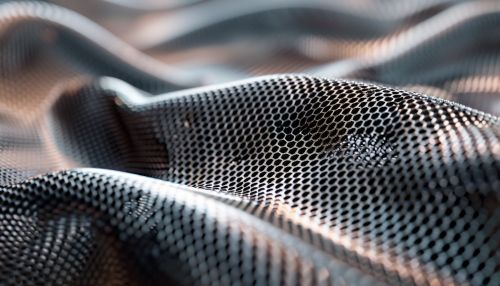Advantages of Smart Materials
Introduction
Smart materials, also known as intelligent or responsive materials, are designed materials that have one or more properties that can be significantly changed in a controlled manner by external stimuli, such as stress, temperature, moisture, pH, electric or magnetic fields. These materials have been engineered to respond to changes in their environment in specific ways, making them highly useful in a variety of applications.


Advantages of Smart Materials
Smart materials offer numerous advantages over traditional materials, owing to their unique properties and responsiveness to external stimuli. These advantages can be broadly categorized into functional advantages, economic advantages, and environmental advantages.
Functional Advantages
Smart materials can perform functions that traditional materials cannot. For instance, shape memory alloys can return to their original shape after being deformed, making them useful in applications such as medical devices and aerospace engineering. Piezoelectric materials can convert mechanical stress into electrical energy, and vice versa, making them useful in sensors and actuators. Thermochromic materials can change color in response to changes in temperature, making them useful in temperature sensors and visual indicators.
Economic Advantages
Smart materials can also offer economic advantages. For example, they can reduce the need for manual monitoring and adjustments in various applications, leading to cost savings. They can also extend the lifespan of products and structures by enabling self-repair and self-adaptation, leading to further cost savings. Moreover, they can enable the development of new products and services that can generate additional revenue.
Environmental Advantages
Smart materials can contribute to environmental sustainability. For instance, they can improve energy efficiency by enabling more effective control of heat, light, and electricity. They can also reduce waste by enabling more precise control of material usage. Furthermore, they can facilitate the use of renewable energy sources by enabling the conversion of solar, wind, and wave energy into electrical energy.
Applications of Smart Materials
Smart materials are used in a wide range of applications, due to their unique properties and advantages. These applications can be broadly categorized into industrial applications, medical applications, and consumer applications.
Industrial Applications
In the industrial sector, smart materials are used in various applications such as sensors, actuators, and controls. For example, piezoelectric materials are used in ultrasonic transducers for non-destructive testing of materials. Shape memory alloys are used in actuators for precision control of machinery. Electrochromic materials are used in smart windows for control of light and heat transmission.
Medical Applications
In the medical field, smart materials are used in various applications such as medical devices, drug delivery, and tissue engineering. For example, shape memory alloys are used in stents for treatment of coronary artery disease. Hydrogels are used in drug delivery systems for controlled release of drugs. Biomimetic materials are used in tissue engineering for regeneration of damaged tissues.
Consumer Applications
In the consumer sector, smart materials are used in various applications such as clothing, electronics, and home appliances. For example, thermochromic materials are used in clothing for temperature regulation. Magnetostrictive materials are used in speakers for sound generation. Photovoltaic materials are used in solar panels for electricity generation.
Future of Smart Materials
The future of smart materials looks promising, with ongoing research and development aimed at enhancing their properties, reducing their costs, and expanding their applications. Key areas of focus include nanotechnology, biotechnology, and information technology.
Nanotechnology
Nanotechnology involves the manipulation of materials at the nanoscale to enhance their properties. For example, nanoparticles of smart materials can be used to enhance their responsiveness to external stimuli. Nanocomposites of smart materials can be used to enhance their mechanical strength and durability.
Biotechnology
Biotechnology involves the use of biological systems to develop or modify products or processes. For example, bio-inspired smart materials can be developed by mimicking the properties of natural materials. Bio-compatible smart materials can be developed for use in medical applications.
Information Technology
Information technology involves the use of computers and telecommunications to store, retrieve, transmit, and manipulate data. For example, smart materials can be integrated with information technology to develop smart systems that can sense, process, and respond to changes in their environment.
